Mangzi Tian 田芒子
The apple at the centre of the universe
Mangzi Tian was born in the city of Shenyang in Liaoning Province of northern China in 1968, started painting at the age of twelve and hasn’t stopped since.
He studied art at Lu Xun Academy of Fine Arts in Shenyang and then Xi’an Academy of Fine Arts in the ancient capital of China and home of the terracotta warrior army.
Influenced by the ink and brush drawings of the old Chinese masters, Mangzi’s early love of the apple came with brush sketches on xuan rice paper. Moving to oil paint, he works with speed and energy applying bold strokes and bright colour. Like his favourite Chinese painters Fu Baoshi and Qi Baishi, he is inspired by nature’s imagery, especially apples.
Mangzi estimates that he has painted some two hundred apples over the last 15 years.
“一只苹果不同的颜色不同的形状,对于我是一个世界。”
Mangzi Tian was interviewed by Apples & People Programme board member David Marshall, with translation help from Mangzi’s wife Lily and by Hannah Richardson.
Why do you paint apples?
I chose the apple as my favourite object for still life paintings because an apple combines both simplicity and complexity, an apple has different colours and shapes. Painting apples allows me to express myself and has influenced my life, including the way that I think and feel about people. I like simple things; simplification is at the heart of everything I strive to create.
And why apples as planets?
The planets in the universe can be viewed as simple and complex, just like apples. For a long time, my interest has been focused on the study of the natural sciences and astronomy – the biosphere, the origins of the universe, the changing physics of celestial bodies. Galaxies, nebulae, planets, magnetic fields, gravity, particles and rays all push my thoughts to consider the boundary of the universe. Through tens of billions of light-years, the traces of the Big Bang, the fantastic rainbows of nebulae and the graceful posture of the galaxy will, through the tunnel of time, forever be captured in that expanding surface. I cannot help but be reminded of the apple in my hand, similarly speckled and spinning like those bodies. This is a fitting metaphor for the apple: made up of innumerable particles, its coming into being and subsequent rotting is a process of energy “gathering” and “dispersing”, and all happens within the natural order of things. An apple is a miniature celestial body and is the picture of the cosmos in my mind.
So as an artist, I want to take my interests and turn them into art, to express the deepness and richness of nature through each differently shaped and coloured apple. I never tire of painting apples because what I have painted are more than apples, they are planets.
What do you want from your apple paintings?
Viewing the apples as planets, my art is about transforming the world, to create a new, beautiful, peaceful planet which belongs to everyone. Chinese philosophy is based on emotion rather than logic or rationality and the Chinese approach to art is to suggest a shape as a hint of the universe. My art has two functions: firstly, to construct an apple, and secondly to try to encourage the viewer to move into a second stage of realizing that the shape represents the universe.
How do you construct your apple planet paintings?
My apple paintings are oil on canvas, normally large – at least a metre square. The apples or planets are suspended in space, but “space” has been removed so that the dimensional effect remains. The various colours that I use represent the different types of people, character and environment. I aim to achieve happiness and balance through the use of colour, different colours indicating different states of mind. I like simple and clear colours. Within one colour you can find variations and layers and bring forth an expression from dark to light – it seems like there are no limits on the dimensions of each colour.
When my paintings draw a person to them, that is when I put down my brush: they have achieved a result that I like to call a “colour field”. Painting is a way for me to vent my emotions – those brush strokes are the footprints of my feelings.
Blue symbolizes the sky and, by extension, the gods. It represents mystical things and the wonders of the universe. So blue apples represent a blue planet of water and oceans that cover most of planet Earth where we live.
Yellow represents gold and wealth, while red symbolizes fire, courage, anger, stormy emotions, love and power.
Pastel pink is like a youthful complexion, the skin of youth.
Purple and lilac represent mystery and the unknown things that we cannot understand. Imperial purple is chemically very closely related to indigo, and it can sometimes be very difficult to tell the two colours apart. It is indeed possible to get blue from purple by involving a photo-chemical reaction in sunlight in such a way that it was like the world itself born out of light. Purple has often been considered to be a symbol of power, greed and luxury. However, bluer shades of purple (with a little sunlight mixed in) remind us not to forget the more mystical side of the universe.
Black can represent time, and white represents logical things. Mixing black and white together, we achieve the colour grey which is passive, silent and meditative, representing profound thoughts and those who love peace.
Green is the new planet, and the hope that this should be the ideal planet.
The world is not always beautiful and human society is not always moral. Human history is full of political intrigues, tyranny, war and slaughter. There are destitute and homeless people, beggars and helpless, poor, hard-working people whilst others are extravagant and don’t share their wealth. Humans are gradually destroying the environment, the planet is polluted, and all the rivers stink with garbage. This depresses me but I have no power to stop it.
The dream of a perfect world is present only in my paintings and in the potential of space exploration to find new planets where humans can live. Turn your head and look at the vastness of space, the universe. Millions upon millions of stars and planets, deserted, waiting for us to arrive and establish a civilisation – this is our dream. They are so far away, yet so near – they make up my everyday life. I never stop thinking about this, creating this planet – a dream world.
“Each apple, differently coloured, differently shaped, each one is a world to me.”
David Marshall comments:
“I first met Mangzi Tian in August 2017 after seeing an exhibition of his apple planets. The contrast between his big bold modern paintings in Shanghai and the intricate watercolours of the Herefordshire Pomona at the Cider Museum in Hereford spoke both to the diversity and universality of apples. Mangzi provided the spark that has ignited into the Apples & People exhibition programme.”





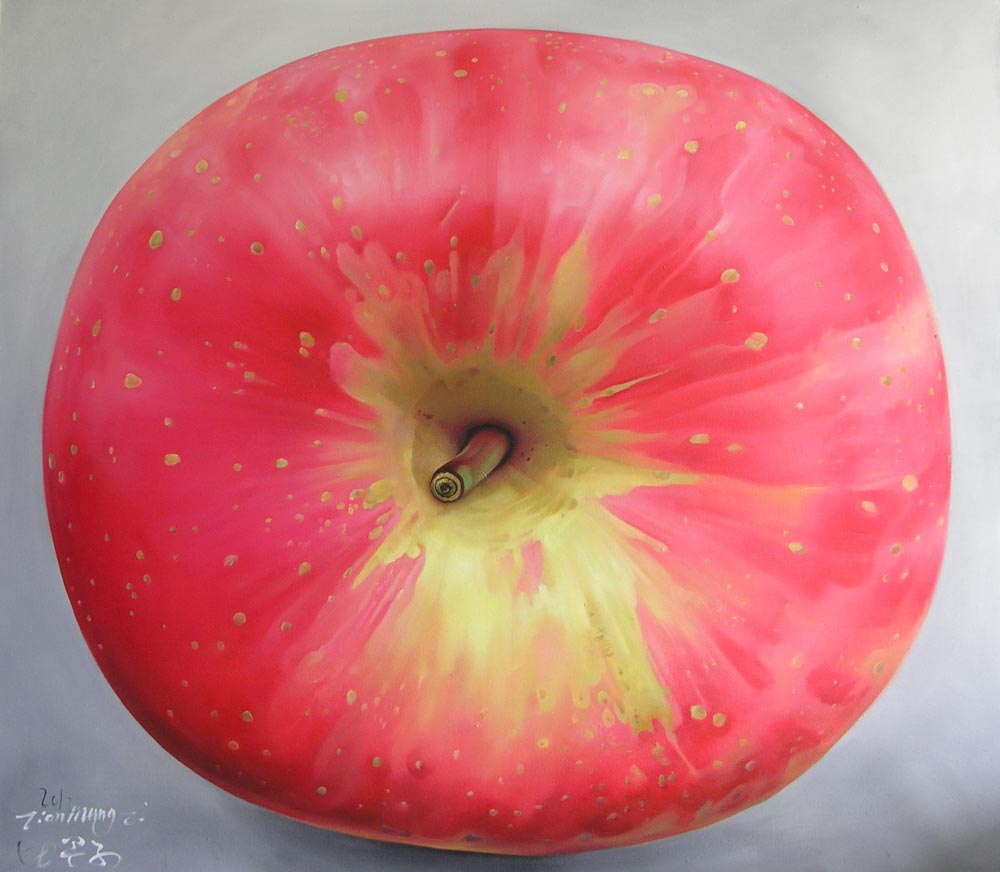

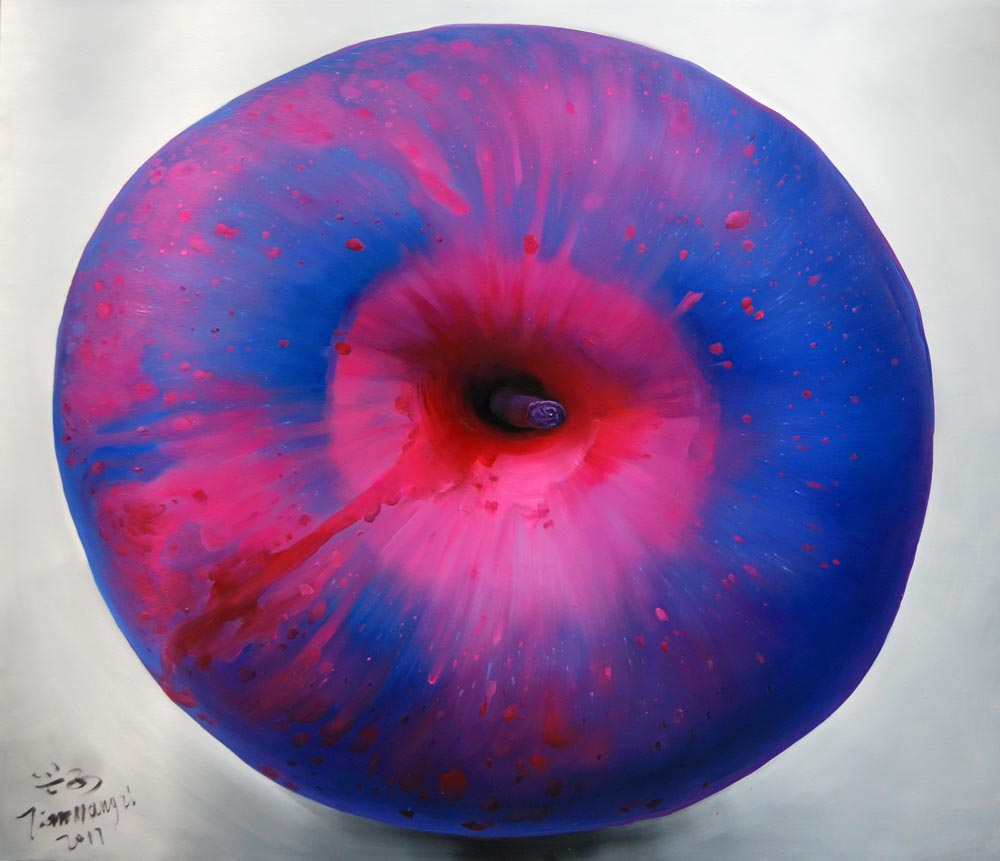

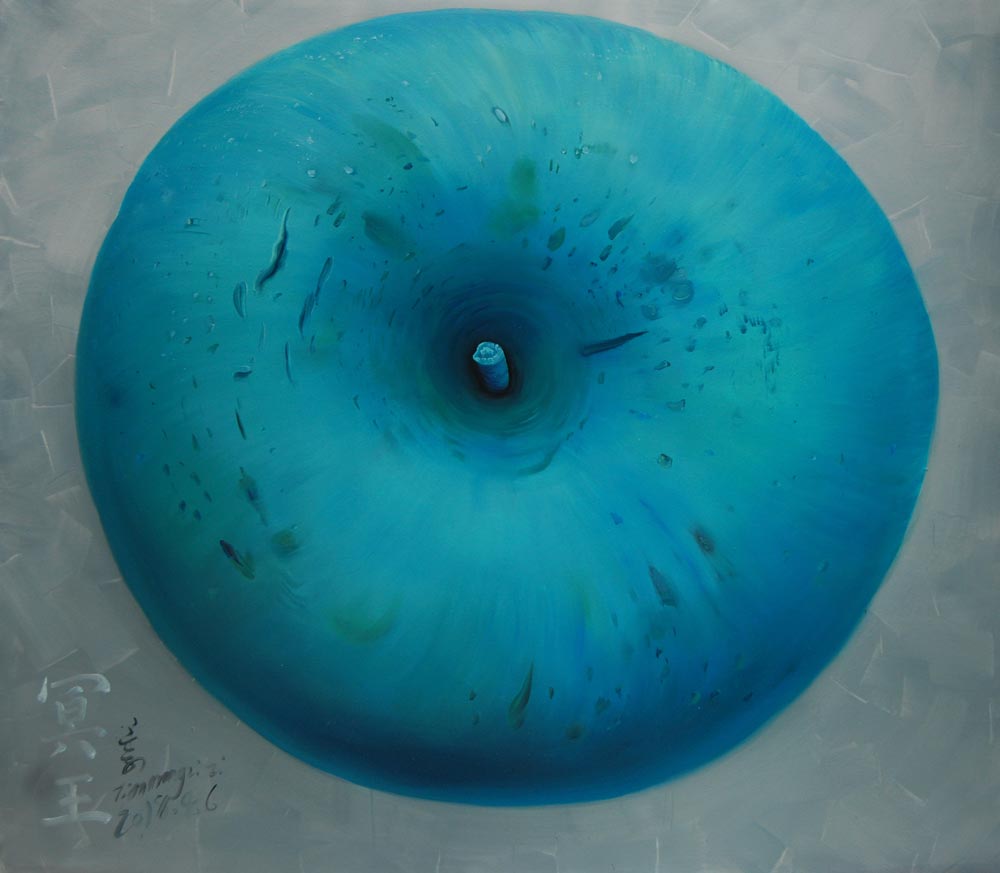
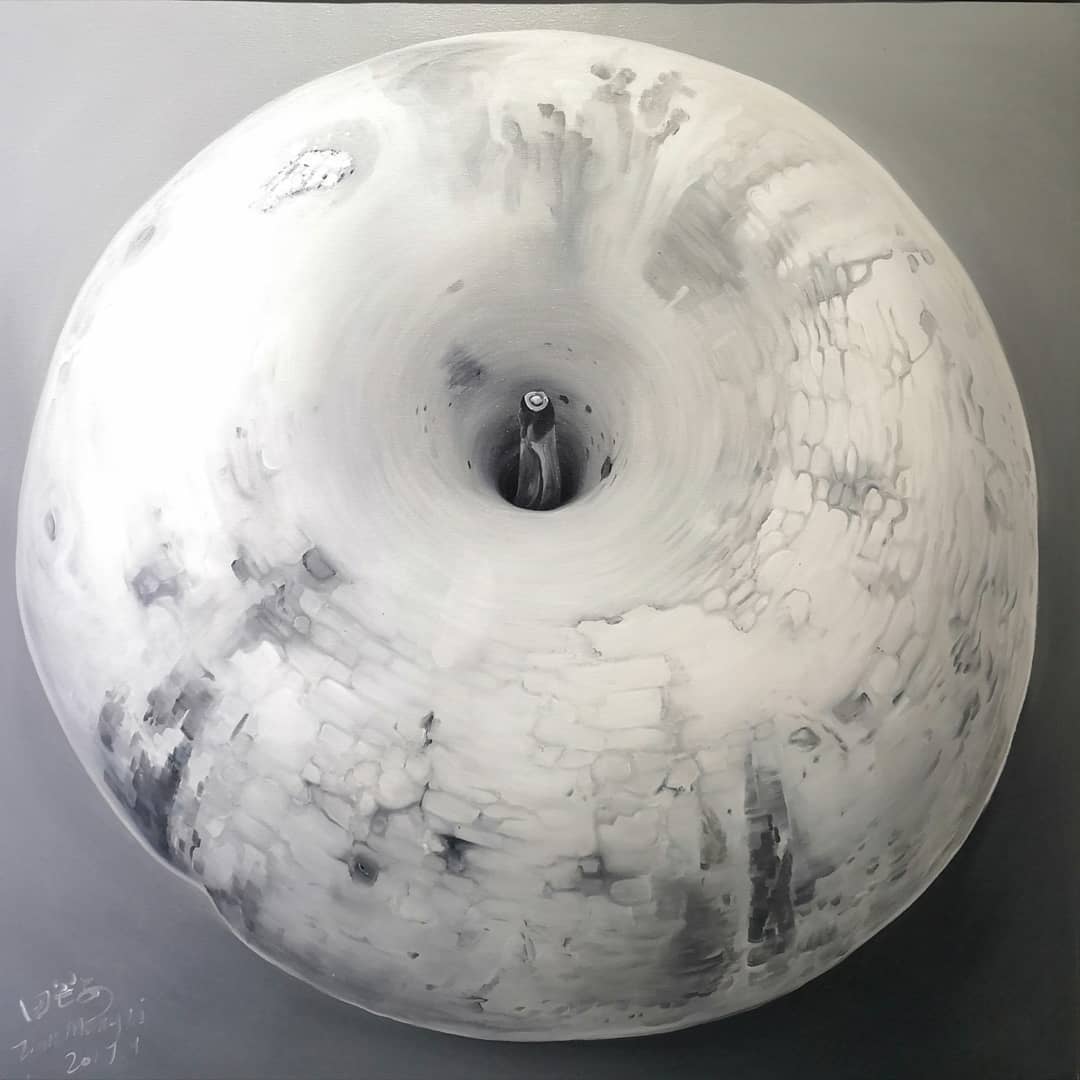

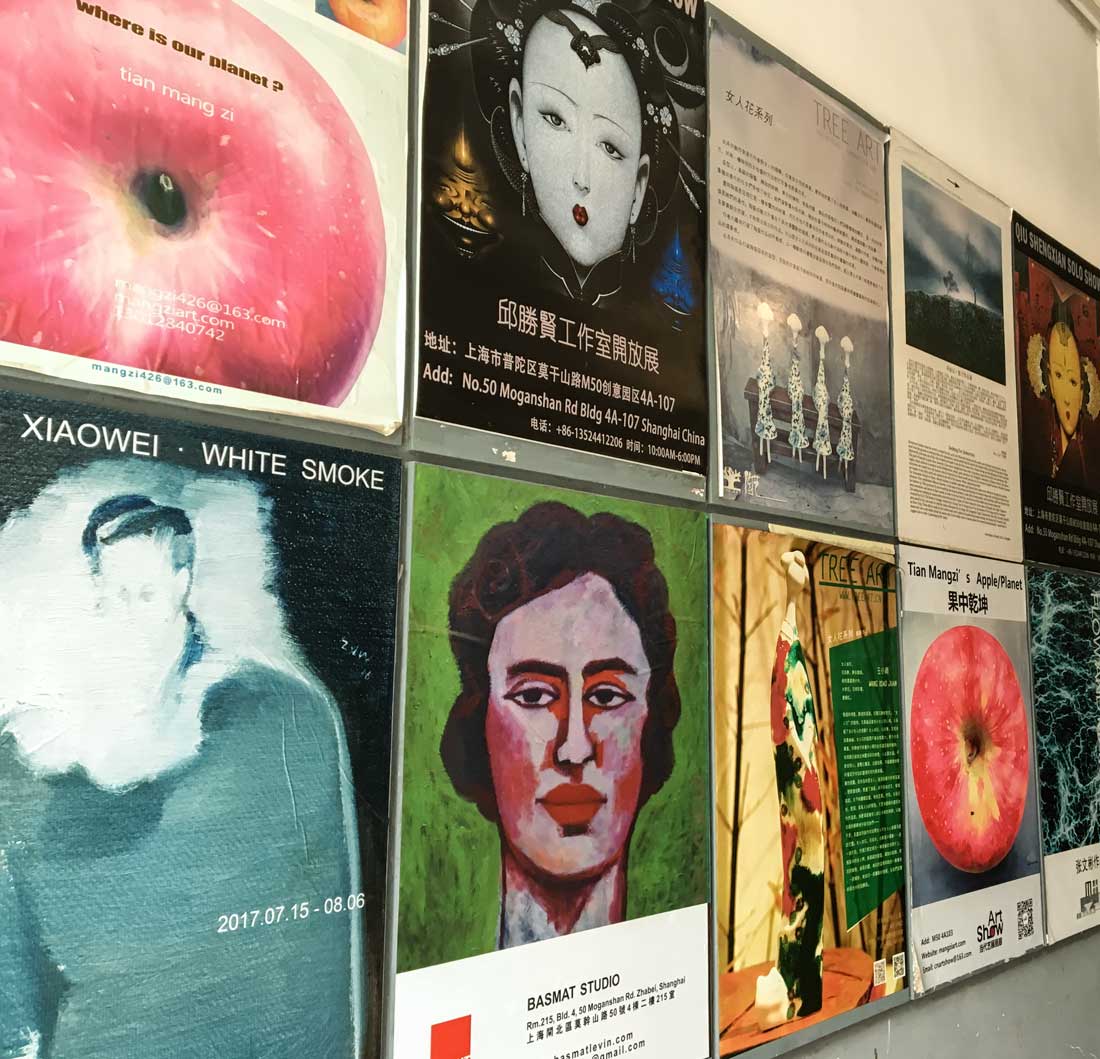


 Barnaby Barford - Land of Hope and Glory Copyright © Barnaby Barford 2021
Barnaby Barford - Land of Hope and Glory Copyright © Barnaby Barford 2021 Apple Crunch CymaGlyph Copyright © cymascope.com 2021
Apple Crunch CymaGlyph Copyright © cymascope.com 2021